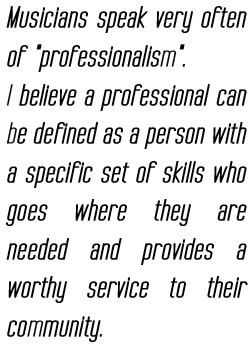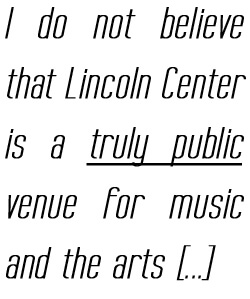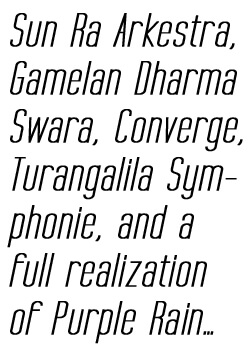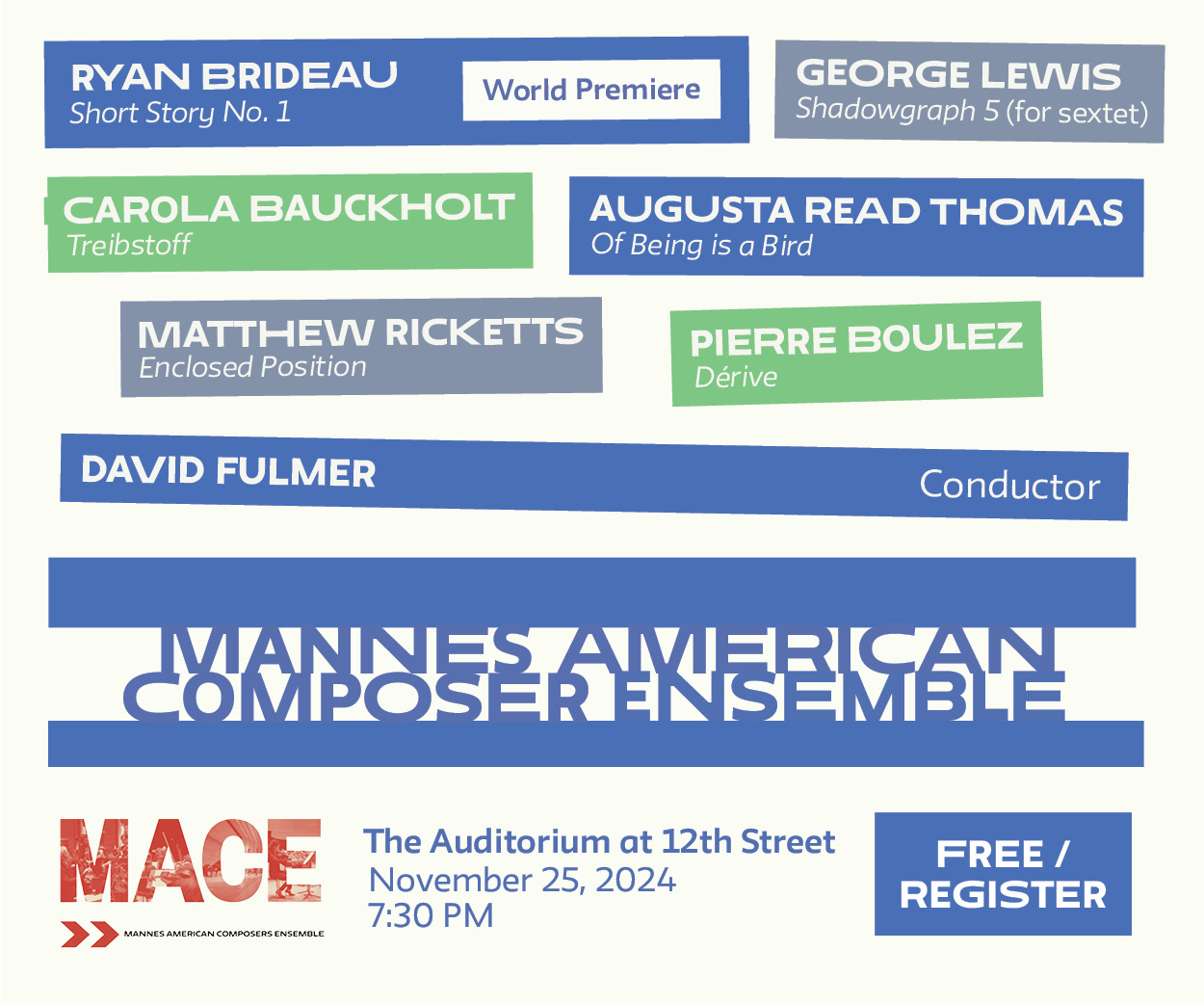The third installment of Stellar Frequencies this weekend in Fort Greene Park was the ideal opportunity to talk to Cory Bracken and let him share some ideas about accessibility, repertoire, and where culture really happens today.
What is the idea behind the Stellar Frequencies concert series and its title?
A simple assessment: I am interested in transcending scenes for the deeper consideration of community. Spend enough time in a cultural environment like New York, and suddenly these terms are illuminated. It seems as though music exists in a thousand unique orbits in this city, determined by the gravity of a particular “scene”. It’s weird to me.
 A loftier assessment: Stellar Frequencies is interested in reconsidering the cultural context of innovative music in American society.
A loftier assessment: Stellar Frequencies is interested in reconsidering the cultural context of innovative music in American society.
Further: Stellar Frequencies is interested in challenging what I call the “esoteric assumptions”; the notion that a more “general” public is incapable of “understanding” an artistic work of an avant-garde or experimental nature, and therefore is equally incapable of properly “appreciating” it. I don’t think this is the case at all. It is necessary to identify distinctions regarding this “understanding” of a musical experience. Should a listener be capable of readily identifying the particulars of advanced harmonic, rhythmic, and timbral activity in a composition, utilizing the language of the western music tradition? Surely, if this is the criterion for a deeper, truer appreciation, than the music of the western avant-garde is, in fact, esoteric. Quite honestly, that sounds silly to me. In terms of the Stellar Frequencies musical experience, structural implications are of lesser value against the experience of the architectural whole. I have discovered that the results of a highly advanced musical language can be absolutely penetrating, mesmerizing, spiritual, and in this respect, everlasting; and, perhaps it could be so for anyone who listens. But, that is a matter of opportunity.
Musicians speak very often of “professionalism”. I believe a professional can be defined as a person with a specific set of skills who goes where they are needed and provides a worthy service to their community. As a performer and general practitioner of the avant-garde tradition, I have arrived to an important realization: any institution that propagates these “esoteric assumptions” will succeed in further dividing the community, and therefore is the very last place we should go, for that is where we are not needed.
What triggered the creation of Stellar Frequencies?
Opportunity.
Stellar Frequencies is entirely informed by the idea of accessibility. It is important to identify this term in two separate contexts: aesthetic, and literal. We have experienced plenty of the former… a kind of approach to musical composition that is interested in utilizing certain “experimental” concepts, but still preserves aesthetic aspects that are readily identifiable and agreeable to an extensive cross-section of ears — the use of diatonic harmony (or modifications of it), repeating and perceptible rhythmic activity, traditional casts of general musical forms, and so on.
I must be clear at this point that I am not identifying these aspects of composition because of an opposition to this approach: quite the contrary, as I often enjoy this music. Rather, this is to clarify a larger idea in this critical word accessibility — Stellar Frequencies is not concerned with solely promoting an accessible aesthetic, as it is wholly occupied with the literal context.
So what does that mean? A thought: I do not believe that Lincoln Center is a truly public venue for music and the arts, in the same way I do not believe that a concert at Miller Theater is truly public, or any recital hall in most any institution, Conservatory or otherwise.
 The idea here is simple. Any reader of this article does not require notification from me or anyone else that cultural institutions like Lincoln Center or Miller Theatre are not on the radar of the public, of the true public, because it is not an aspect of their cultural routine. The vast majority of citizens would never consider attending an event there because they don’t even know that it exists, or the cultural implications are too vast, too intimidating to deal with. The concert etiquette of “sit down and be quiet”, coupled with the confounding language that fuels the “educated opinion” of the audience, is off-putting to say the least. Add to this an aesthetic of music that is completely alien (because it was not exposed to them at any point in their lives), and you unfortunately arrive at the idea of what “classical” and “avant-garde” means to the broader public.
The idea here is simple. Any reader of this article does not require notification from me or anyone else that cultural institutions like Lincoln Center or Miller Theatre are not on the radar of the public, of the true public, because it is not an aspect of their cultural routine. The vast majority of citizens would never consider attending an event there because they don’t even know that it exists, or the cultural implications are too vast, too intimidating to deal with. The concert etiquette of “sit down and be quiet”, coupled with the confounding language that fuels the “educated opinion” of the audience, is off-putting to say the least. Add to this an aesthetic of music that is completely alien (because it was not exposed to them at any point in their lives), and you unfortunately arrive at the idea of what “classical” and “avant-garde” means to the broader public.
So… what if you were to remove the music from this rather sterile environment that is so culturally threatening? Say, a place that is familiar, welcoming, an aspect of your cultural routine… a bar, sidewalk, train station, or in the case of Stellar Frequencies #3 in September of 2011, a public park.
This would be a good time to identify the incredible efforts of (certain) individuals and arts organizations in New York City to provide a wealth of music that is free and public in a variety of artistic aesthetics. This is, of course, commendable, and most artistic denizens of New York would agree.
 With that said, lets stir the pot with a brash statement, because honestly, I’m sick of the lack of controversial declarations in modern music discourse:
With that said, lets stir the pot with a brash statement, because honestly, I’m sick of the lack of controversial declarations in modern music discourse:
The Euro-centric institutional mechanisms have claimed a certain ownership of avant-garde western musical thought, and frankly, I think that’s bullshit. With this statement, I am aware of three truths: I am not the first, I am not alone, and I will not be the last. Their old-world money and powdered-wig tendencies have clearly defined a cultural (and economic) elite that seems fairly lacking in concern for a broader public. Stellar Frequencies has no interest in stroking the colossal ego of the bourgeois classical or avant-garde art community, and never will. Instead, it will always strive to obliterate the tendencies of institutional thought that haughtily prescribe esoteric assumptions about the musical experience for anyone outside of its hermetic, cloistered environment. Clearing this obstruction is at the heart of this “reconsideration of cultural context in American society”.
Likewise, Stellar Frequencies has no interest in pandering to the tastes of exclusive “scenes” in all kinds of music and art beyond the institutional influence. I have noticed a disconcerting tendency for an absolute aesthetic homogeneity in certain musical spheres, and I intend to promote a kind of integration in this respect.
Perhaps you don’t agree. In fact, I hope you don’t agree, and I hope you broadcast it on this blog. Then maybe we’d have an edgy discussion for once in this sea of mediocrity that is so mistakenly identified as “new-music”.
Are you focusing on any specific area of the contemporary repertoire?
Absolutely not. Stellar Frequencies intends to embrace innovative music from a variety of musical universes. I have no interest in discriminating among contemporary repertoire: uptown/downtown, electronic/acoustic, standard repertoire/newly written works; you name it. It’s all cool shit to me.
More importantly, I have every interest in embracing other aspects of innovations in western music (rock, jazz, folk, funk, all that good stuff) and many aspects of non-western music (West African, Balkan, Indian, South American) and smashing them together. So, the real answer to your question is: I’d like to focus on cultivating a stronger community of musicians and audiences from differing cultural milieu.
It should be noted that I have not outlined the present situation of Stellar Frequencies at any point in these responses, but rather an ideal future, and what my intentions are. And I’m pretty fucking serious about it.
What is the weirdest place you’ve ever played at?
 Well, there’s really no entertaining answer to this question… yet. Stellar Frequencies has enjoyed only two installments thus far. Our first was at Death By Audio in Brooklyn: the BACK Voice + Percussion Duo played works by John Cage, Eric Lyon, and Dave Ruder, and we were joined by Elevator Rose for a rendition of Andriessen’s Workers Union. That was far from weird; that was awesome. The second was the upstairs lounge of Pianos NYC… a little weird when 80’s dance classics are blasting from a crowded LES bar during your set, but whatever, it was fun.
Well, there’s really no entertaining answer to this question… yet. Stellar Frequencies has enjoyed only two installments thus far. Our first was at Death By Audio in Brooklyn: the BACK Voice + Percussion Duo played works by John Cage, Eric Lyon, and Dave Ruder, and we were joined by Elevator Rose for a rendition of Andriessen’s Workers Union. That was far from weird; that was awesome. The second was the upstairs lounge of Pianos NYC… a little weird when 80’s dance classics are blasting from a crowded LES bar during your set, but whatever, it was fun.
Weirdest place I’ve played at personally: Stella McCartney’s boutique during Fashion’s Night Out in 2008. That was a bogus journey. The fashion world is seriously fucked.
Perfect program by the perfect ensemble at the perfect place, no limitations of money, time or space… go!
That is a fantastic question.
Sun Ra Arkestra, Gamelan Dharma Swara, Converge, Turangalila Symphonie, and a full realization of Purple Rain… at a high school in the Midwest. That would tip the scales for me; I’d spin right off the planet.
And perhaps now it is appropriate to answer the question about the title.
Infinite potential, infinite community, guided by the eyes of infinite love, the most Stellar of Frequencies! Affect positive change, be thankful, take action in the name of service, and love. It’s as simple as that.
—
Cory Bracken is the Executive Director of Performers Forum and Stellar Frequencies, as well as a percussionist in Iktus Percussion Quartet and BACK (Voice + Percussion Duo). Check out STELLAR FREQUENCIES #3 — Saturday, September 24th, sets at 2pm & 4pm – Fort Greene Park, Base of the Martyrs Monument. Music by Reich, Xenakis, and Wolfe. Free.



















